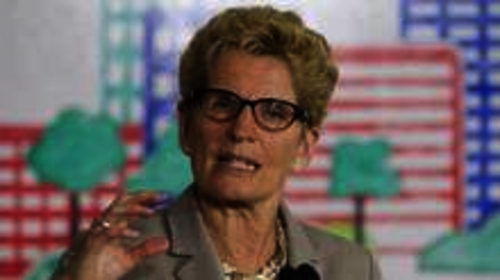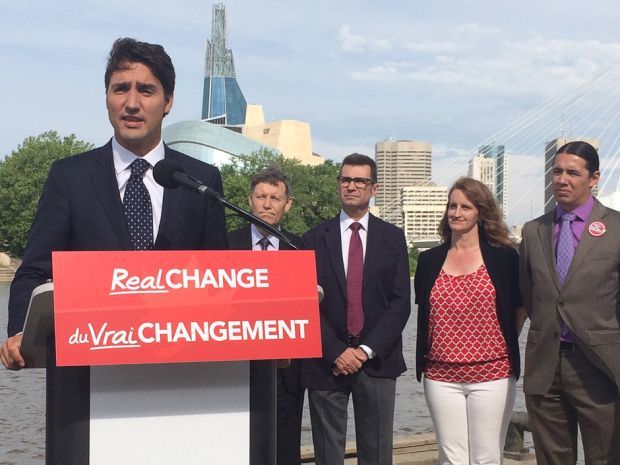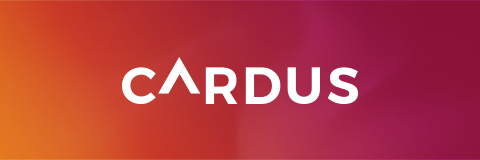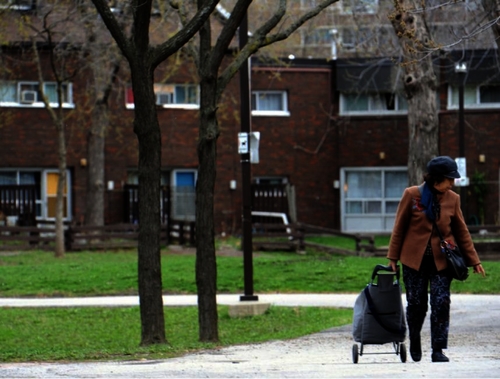To read this article, click here.

Faith in Canada 150 event in Calgary community of Inglewood to celebrate role of faith in Canada’s history
March 23, 2016

Canada’s religious freedom ambassador Andrew Bennett set to work with Christian think-tank
Read the article in the Star here .
March 17, 2016

Can Data Standards Improve Our Common Lives?
This piece was originally published in Municipal World. Are data standards what our communities and cities need most? Certainly not. We are in much greater need of aspirations that are far more enriched than that. Our communities already suffer for the lack of aspirations that foster hope, rather than despair. Organizing and collecting useful data, however, can be very valuable if, along with that organizing and collecting, we have proper confidence in that data. Information about our communities that is clear, consistent, and available in useful forms can support our efforts to develop well-provisioned, human-centred communities and cities. Information has always been a critical resource for good decision making. Municipalities rely on all kinds of data to effectively fulfill their various responsibilities—e.g., water quality testing, assessing and collecting taxes, building permits, and information on infrastructure. With this in mind, ISO (International Organization for Standardization) has been working on a new data standard called ISO 37120:2014, designed to help municipalities consistently measure various aspects of sustainability and quality of life. Indicators for Sustainability and Quality of Life ISO 37120 is a voluntary standard that provides information for municipalities on 100 factors that ISO has identified as critical for quality of life for citizens and long-term viability for infrastructure. The standards describe what data to collect and what format the data needs to be in to allow for equivalent comparison with other municipalities. There are 46 core indicators—standards with a “shall” weighting—indicating a requirement that you need these to be an official ISO 37120 participant. These range from firefighting capacity to water quality standards. An additional 54 indicators are “should” weighted and are recommended as supports to the core indicators. ISO is a post-WWII standards organization that was started to increase the reliability and consistency of processes and information across a wide range of engineering, manufacturing, and management practices: “The foremost aim of international standardization is to facilitate the exchange of goods and services through elimination of technical barriers to trade” (ISO/TC 268 Business Plan). In addition to engineering and manufacturing, ISO standards include IT and data management, as well as social responsibility standards. Some of the standards include certification—achievement of a standard that is verified by ISO and that can be used as an industry benchmark. In the case of ISO 37120, participation is voluntary, meaning the standard is not intended to be a formal certification. Instead, it is designed to provide a framework for internal progress on measures that are deemed important to municipalities and, in turn, provide an opportunity for comparison across municipalities globally. ISO has identified that confusion on sustainability reference points and access to consistent data are key issues. Clarity and conformity are the objectives being sought with ISO 37120. Value of Standardization This interest in standardization for municipal data collection is intended to provide guidance on what kind of data is important to collect and how to organize that data consistently. We know that what gets measured is more likely to be attended to than what does not. The team working on ISO 37120 determined that the indicators selected are foundational for sustainability and quality of life. These base contributors are expected to foster growth and development of economic and social characteristics. Businesses and investors can use this information with greater confidence that what they are seeing is equivalent from one community to another. ISO also notes that it expects that municipalities will be able to use these measures to improve lending rates, save on insurance costs, and increase their ability to evaluate progress on municipal goals and aspirations. On the tempestuous seas of contemporary data generation, consistent standards that help leaders identify both what is important and how to measure it are increasingly relevant. We are slowly learning that having huge quantities of data doesn’t help if it’s the wrong kind of information and doesn’t address the questions we are asking. As municipalities consider adopting ISO 37120, one of the key questions for municipal leaders is: How well does ISO 37120 frame municipal sustainability and quality of life? If a given city collected and organized its data using this specific framework, would the resulting picture of the municipality be adequate? What would be missing? Additional Considerations Let me propose four further questions that can help municipal decision makers evaluate the merits and limits of ISO 37120. First, how well suited is this international standard to Canadian municipalities? Given that this is an international standard, the particularities of our context needs to be considered. Interested users will notice there are a number of indicators that don’t apply to most Canadian communities. One of them is in the required “transportation” indicator section, where the core measure is the number of kilometres of high-capacity public transportation per 100,000 residents. This could be pro-rated for smaller municipalities; but, the category may simply not apply given that there are only about 50 municipalities in Canada with populations larger than 100,000. More than 3,600 of Canada’s municipalities are smaller communities, where high-capacity transit isn’t relevant. Other measures for transportation will likely be more useful as a base infrastructure indicator outside of major metropolitan areas. Another measure that reflects the international dimensions is found in the “shelter” section, where the indicator used is a percentage of city population living in slums. Though Canadian cities have had slum areas in the past, current legal and formal developments have changed the nature of housing shortages and migration patterns in Canada. Poverty, homelessness, and inadequate housing remain vital issues—but, measuring them in terms of percentage of a given city that is devoted to slums is not an effective tool. A second question when considering ISO 37120 is to ask what is missing in terms of measuring sustainability and quality of life. One of the most notable gaps is a lack of higher-order human needs, such as purpose, meaning, and belonging, as they relate to quality of life and sustainability. The needs addressed in the standard are very basic, located near the two lower levels of Maslow’s hierarchy of needs—physiological and safety/security. While these are critical needs, and necessary for effective municipal function, they are clearly not comprehensive indicators. Canadian municipalities are required to meet these needs as a requirement of laws outlining municipal responsibilities. It is possible to meet these basic needs, but leave significant issues unaddressed. Higher-order matters are particularly vital to quality of life—belonging, esteem, self-actualization. These are the arenas of purpose, meaning, and belonging that are essential for full citizenship. Similarly, the sustainability measures reflect very basic, functional matters that do not address more difficult overarching issues—such as the gap between the many who have much and the few who have little, and what narrowing that gap might mean for global resource development. In cities and communities, basic needs and higher-order needs are deeply interrelated and consistent delivery of basic services is dependent on matters such as collective trust, acceptance of legal institutions, investments in education, and so on. What isn’t clear, or included in the 198 Swiss Francs ($275 CAD) document’s standards, is a rationale for the choices made in developing the standard. ISO 26000:2010 (the standard for social responsibility and other wellbeing indicators) may need to be carefully considered alongside ISO 37120. Third, does this standard provide a data framework that will save administrators and managers time? Does it simplify the often difficult process of deciding what data is important and how it can be collected and communicated to decision makers? Wide adoption of the standard will require that its simplifications make it useful for navigating the emerging data landscape without being simplistic. One way to evaluate this sense of it would be to identify, independently, what key municipal issues are in a given context and then look at ISO 37120 to determine how those key issues are addressed (or not) by the indicators. This would prevent the standard from determining what matters to a municipality. For example, the “urban planning” section requirement only asks about the hectares of green areas present per 100,000 residents. This is important; but, for most Canadian municipalities, it would not rank high as a single measure on the planning priorities list in the same way that it might in global, informal developments, where green space can be exceedingly rare. Finally, if ISO 37120 was widely adopted in Canada, would it provide a sufficiently useful framework such that organizations like the Federation of Canadian Municipalities would find it valuable for lateral comparisons? How would it fit within or alongside other national data such as that from the National Household Survey, the various cycles of the General Social Survey, Census data, the Standards Council of Canada, or various types of market-derived data? Comparing ISO 37120 with the role that these data sources play in current municipal practice will be required in order to clearly identify where the gaps and overlaps are. Safeguarding the Process The ISO does not claim to be comprehensive or sufficient for all measurement. Standards related to resilience (an important aspect of sustainability) are being developed, for example, and ISO will continue to add new standards to the more than 20,000 that have been developed since the 1940s. Disciplined, focused, and common standards can be very useful for municipal leaders as they navigate the changing conditions of their various communities, as long as we are aware that there are many assumptions, blind spots, and deep values that are quietly built into all measures. We can safeguard the process by making a parallel investment in understanding what those assumptions are and how they will shape the long-term direction of our communities and cities.
March 4, 2016

It’s time Ontario warmed up to education diversity
November 3, 2015

Increasing Our Ability to Evaluate Complexity
October 22, 2015

Would Trudeau’s rejection of a coalition withstand the pressure to remove Harper from office?
Election campaigns are supposed to highlight differences. Stark differences provide alternatives that can inform voter choices. As the grind of this 11-week federal election campaign unfolds, the policy proposals and attempts by the parties to define themselves — and each other — creates the narrative that will inform voters’ final choices on Oct. 19. However, it is plausible that the most meaningful result of this campaign could be a significant change to how we conduct federal elections. Policies buried in the footnotes of the party’s platforms, and barely registering with the voting public, could fundamentally change the way Canadians choose their federal Parliament. Both Tom Mulcair’s NDP and Justin Trudeau’s Liberals are on record that this will be the last federal election using the “first-past-the-post” rules that have been in place since 1867. Many have responded to these proposals with a yawn. Opposition parties have frequently proposed electoral reform, only to fail to follow through once in office (which, by definition, they achieved under the old rules). Five provinces have seriously attempted electoral reform in the past decade. None of these processes resulted in meaningful change. So it’s easy to dismiss the current proposals. Liberal activist Adam Goldenberg argued in Policy Options recently that Mulcair cannot be trusted to follow through on his promise, citing pressure from the grassroots that caused Alberta NDP Leader Rachel Notley to drop a similar commitment before she became premier. Besides, he said, Mulcair has shown himself willing to put his party’s electoral prospects above his principals by refusing to support Green Party Leader Elizabeth May’s inclusion in all the debates. Of course, only a month or so ago NDP activist Jamey Heath opined that the Liberals are the obstacle to “our long overdue realignment” by expecting that the pressure for change will ultimately come outside of the electoral process. Yet suppose the first-past-the-post system under which the Oct. 19 election is being fought creates the conditions for different political motivations. Would Trudeau’s confident rejection of a coalition with Mulcair’s NDP withstand the pressure to remove Prime Minister Stephen Harper from office if the opportunity presented itself? Campaigns make a difference, so it is hardly prudent to predict outcomes this far in advance. However, it is credible to posit a scenario in which the Conservatives win 140-or-so seats, the NDP 120ish and the Liberals 70 or so. History suggests a third-place party that formally enables a minority government to sustain power is rarely rewarded. Witness what happened to junior members of Liberal-NDP Accord in the 1987 Ontario election, or the Conservative – Liberal-Democratic Coalition in the 2015 British election. The enabling party tends to get very little of the credit and at least an equal share of the blame from voters. Even the unification of the Progressive Conservatives and Canadian Alliance in 2003 was made possible only by a degree of sacrificial diplomacy from Peter McKay who, in agreeing to unite the parties, effectively killed his own prime ministerial ambitions. Sacrifice being notably in short supply in contemporary politics, is Trudeau ready to risk his personal ambition to see systematic change achieved? Well, the decision may not be Trudeau’s to make. The Liberal brand is a historic and powerful brand within Canadian politics. Even though it has been in decline on the federal stage, it will not disappear easily. Established Canadian political brands have longevity that outlasts electoral misfortune. In 1993, the federal Progressive Conservatives went from majority government to two seats in the House of Commons, yet their brand remained such that MacKay’s surrender of it in 2003 was hotly contested. The Liberal establishment, which shows little love for its NDP counterparts after decades of sparring for centre-left votes, will surely not be keen to watch Trudeau help Mulcair become prime minister. But what if the election results let both Liberal and NDP operatives realistically game scenarios in which they win the next election under new rules? Surely, then, removing Harper and the despised Conservatives becomes the necessary pretext to facilitate their strategies. Imagine a Liberal-NDP deal in which Mulcair becomes the prime minister provided he agrees to pass a new election law within two years, after which this election for change would be re-fought. There is plenty within both party platforms to be pointed to as a mandate for this change. If you are concerned Mr. Harper has turned the quick dash of a 37-day election campaign into an 11-week marathon of hope, prepare to have your patience tested further. Against the settled political outcome to which Canadians are accustomed, the 2015 vote could lead to deep uncertainty about how we’ll even choose our Parliament, followed by a snap 2017 election that will leave us more unsettled still. The only sure thing is that the consequences will be far reaching for Canada.
August 28, 2015

Ray Pennings on 570 News: Institutions need to maintain their identities
Cardus executive vice president Ray Pennings appeared on Kitchener, Ontario's The Eric Drozd Show with guest host Glenn Pelletier to discuss the recent news that an Atheist minister is fighting to continue working for the United Church. Pennings discussed how the institutional identity of the church includes certain fundamental beliefs, and how leadership in churches must commit to those beliefs in order to be effective leaders. If Rev. Gretta Vosper wanted to start a different organization to support a community sharing her beliefs, Pennings said, that would be well within her rights. But to ask the United Church conform to her beliefs is to challenge its very reason for existing. You can listen to this episode by clicking here and selecting Friday, August 7th, 2015 - 11am.
August 7, 2015

Making Public Housing Dollars Go Further
The Mayor’s Task Force on Toronto Community Housing (TCHC) wants more. It released an interim report last week complete with seven recommendations, almost every one of which calls for more: more funding for capital repairs, more security, better building conditions, more jobs and opportunities, more training for TCHC staff, more engagement between residents and TCHC staff. Given the size of the repair bill facing TCHC—$2.6 billion and climbing—wanting more is perfectly reasonable, even if the likelihood of getting enough to pay that bill seems small. So, what do you do when you need more, but don’t have enough? The tenants of TCHC know. You try to do more with less. Read the full article at the Toronto Star website.
July 28, 2015

Brian Dijkema in <i>Toronto Star</i>: Solutions for public housing
In light of the Mayor's Task Force on Toronto Community Housing's report released last week, Cardus Work and Economics' Brian Dijkema wrote about how the city might be able to stretch dollars to greater ends, as shown by research in the recently published brief, Tuning Up Ontario's Economic Engine. So, what do you do when you need more, but don’t have enough? The tenants of TCHC know. You try to do more with less. You work hard to stretch every little bit of money as far as it can possibly go. The Task Force, the TCHC, the Mayor’s office, and yes, the province, should learn from the TCHC’s tenants. In addition to asking for more, they should be searching the cupboards for ways to make the limited money they have go even further. Part of the solution may be hiding in plain sight, says Dijkema. Cardus research indicates that open competition could lead to savings of 20 to 30 percent. Read the full article at the Toronto Star website.
July 28, 2015
Media Contact
Daniel Proussalidis
Director of Communications
